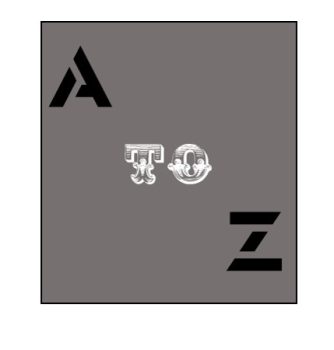A to Z Reviews: “Wasted Potential,” by David Lee Zweifler
 Over the past several years, I’ve embarked on a series of year-long review cycles at Black Gate. In 2018, I reviewed a story-a-day to coincide with an author whose birthday it was. In 2022, I selected stories completely at random from my collection to review. In both of those cases, the projects served to find forgotten and minor works of science fiction that spanned a range of years. They also served to make me read stories and authors who I haven’t read before, even if they were in my collection.
Over the past several years, I’ve embarked on a series of year-long review cycles at Black Gate. In 2018, I reviewed a story-a-day to coincide with an author whose birthday it was. In 2022, I selected stories completely at random from my collection to review. In both of those cases, the projects served to find forgotten and minor works of science fiction that spanned a range of years. They also served to make me read stories and authors who I haven’t read before, even if they were in my collection.
For this year’s project, I’ve compiled a list of all the stories and novels in my collection. I then identified the first and last works for each letter of the alphabet and over the next twelve months, I’ll be looking at those works of fiction, starting with Vance Aandahl’s “Bad Luck” and ending with David Lee Zweifler’s “Wasted Potential.” Looking at the 52 works (two for each letter), I find that I’ve only reviewed one of the works previously. Interestingly, given the random nature of the works, only three novels made the list, while four anthologies have multiple stories on the list. The works range in publication date from 1911’s “The Hump,” by Fernan Caballero to Zweifler’s story from 2023.
After a year, we finally come to the end of the alphabet, with David Lee Zweifler’s “Wasted Potential,” which was published in the November/December 2023 issue of Analog.

After being laid off from his job as head of product for a fruit-flavored diet carbonated beverage, Elliott has hit the job market, using the newest technological advances to find the perfect job for himself. Unfortunately, the promise of quantum computing, which should make the job search (and everything else in life) easier, is not functioning the way Elliott would like it to.
The training videos promise exciting jobs, such as space piracy, interstellar zoo seeping, and other off-world adventures. Elliott’s own job searches are offering payroll, management, and billing positions in such hotspots as Cleveland, Waco, and Cairo, the one in Indiana, not even the one in Egypt. The dichotomy of the promises and the reality only leave him dissatisfied and wanting more.
Even worse, it makes him feel as if he is holding his girlfriend, Daphne, back from achieving her own potential. The wasted potential of the title, therefore, is not only his own, but also what he is doing to the woman he loves.
Zweifler offers an interesting conceit, but what makes the story successful is that he doesn’t take any of it too seriously. Elliott’s accidental deactivation of the microphone on his speaker means that the only way he has to communicate it through his AI coffeemaker, which has a lower opinion of Elliott and his potential than Elliott does.
While the humor of the piece doesn’t always work, it is present throughout as Zweifler offers a satirical look at job searches, AI, and instruments that are meant to make our lives easier. Perhaps Zweifler is aiming at too many targets or perhaps the humor exhibited isn’t quite biting enough to offer a sting. Humor, of course, is subjective and at the very least, he offers the story with a lighthearted touch throughout.
His character’s job search includes nice homages to Robert A. Heinlein’s Starship Troopers and Frank Herbert’s Dune.
And that ends my series for 2024. I’ll be taking a short break from the pages of Black Gate, returning with the start of a new series of articles at the end of February.
 Steven H Silver is a twenty-time Hugo Award nominee and was the publisher of the Hugo-nominated fanzine Argentus as well as the editor and publisher of ISFiC Press for eight years. He has also edited books for DAW, NESFA Press, and ZNB. His most recent anthology is Alternate Peace and his novel After Hastings was published in 2020. Steven has chaired the first Midwest Construction, Windycon three times, and the SFWA Nebula Conference six times. He was programming chair for Chicon 2000 and Vice Chair of Chicon 7.
Steven H Silver is a twenty-time Hugo Award nominee and was the publisher of the Hugo-nominated fanzine Argentus as well as the editor and publisher of ISFiC Press for eight years. He has also edited books for DAW, NESFA Press, and ZNB. His most recent anthology is Alternate Peace and his novel After Hastings was published in 2020. Steven has chaired the first Midwest Construction, Windycon three times, and the SFWA Nebula Conference six times. He was programming chair for Chicon 2000 and Vice Chair of Chicon 7.
Bravo! Congratulations on concluding this excellent series!